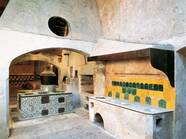Two Popes Declared Saint, Paul VI & the Second Vatican Council
One Sunday, April 27th, the festivity of the Divine Mercy, to declare saint, together, two Popes, John XXIII and John Paul II. So close, yet so far.
Never in the ecclesiastic world two personalities had such different life journeys. Even if many are trying these days to find common meanings, related experiences, similarities…the truth is that there aren’t any, except for both of them having been Popes.
A choice though that cannot be random, even if no one believes it, and that hides a communications strategy, the justifiable desire to present, by celebrating the heroic virtues of these two great men, the explicit urge of a declining Church that attempts to regain the world stage.
A Church striving to propose a positive image of itself, that after being stained by too many internal misdeeds, still has something interesting to tell the contemporary world.
Two Popes declared saints simultaneously: a first, a choice that cannot be but challenging.
Pope Francis bets on the Church crisis and on its need for innovation. A Church that is going through a difficult and painful spell. A crisis that could determine its collapse, invasive to the point of threatening the audacious pastoral response of the Argentinean pope, who is surely aware of the difficulty of spreading the new word within those high walls made inaccessible by powers opposed to any real change.
Of course Pope Francis is achieving resounding success in many domains, not only catholic, but they are personal achievements that don’t impact deeply on the ecclesiastic reality as such: what’s needed to change the face of the Church is more than a crowded St Peter’s Square every Sunday.
The Pope knows it well, he knows that the crisis of the Church seems unstoppable and that his young pontificate barely manages to keep it under control, and who knows for how long more.
An emergency that in his own words, pronounced emphatically and with emotion whenever he is given the chance, is not hidden, but actually reminded to the audience, in detail, with the aim of recognizing it in order to manage it. With the purpose of maybe transforming it, also thanks to numerous and significant new contributors, men and women, laics and clergy, who consciously and without postponing it, take seriously their duty to innovate the Church at its deepest level.
A well thought out choice then, this one of Francis’, that presents to the world two great figures, the two saint Popes, that believers and non believers had differently loved, admired, followed, glorified, criticized, fought. But no matter what, both at the center of the world’s dialogue.
Personalities that during the complex current circumstances could act as a stimulus, could be of encouragement for those who feel it’s their duty to innovate the Church. To challenge the world, but above all the Church itself, with a problematic yet exciting message: if you think that the Church is doomed, that it cannot change, that its problems will remain insurmountable, I’ll instead tell you about a Church that is still alive, that still has a lot to say. Like John XXIII and John Paul II, our contemporaries, did: by subverting their own world with their lives, delivering an authoritative and critical message.
Two Popes that defined last century. Only 50 years separate them, even though it may seem longer than that.
Pope John who read the history of humanity as and experience of love between God and his people. Even the moon, on the night of the opening of the Second Vatican Council, in the joyful St Peter’s Square, was called out to witness the spectacle: God, the man, all that’s been created. All enveloped in one embrace.
Pope John Paul, the man who came from afar, brave traveler in the world of human suffering, able to recount to the most distant a Church that is present, close, compassionate. But also strongly opposed to any authoritarianism, to the cruelty of social injustice and the brutality of organized crime.
Between them the Second Vatican Council and a great absentee on the day of the canonization, Paul VI, who for both of them could have been a point of contact.
But maybe this is Pope Francis’ latent intent: proclaiming John XXIII and John Paul II saints to finally bring up Paul VI and that remarkable event that the Council has been, only way to go in order to hope, beyond the square, in a beautiful and saint Church.












































i-Italy
Facebook
Google+
This work may not be reproduced, in whole or in part, without prior written permission.
Questo lavoro non può essere riprodotto, in tutto o in parte, senza permesso scritto.